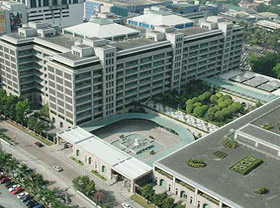
Bleak outlook for developing Asia, but region can cope with crisis, says ADB
ADB’s flagship annual economic publication, Asian Development Outlook 2009 (ADO 2009), released today, forecasts economic growth in developing Asia will slide to just 3.4% in 2009, down from 6.3% last year and 9.5% in 2007. If the global economy experiences a mild recovery next year, the outlook for the region will improve to 6% in 2010.
Deteriorating economic prospects will hinder the efforts to reduce poverty. With the slow growth, more than 60 million people in 2009, and close to 100 million people in 2010, will remain trapped in poverty - living on less than US$1.25 a day - than would have been if growth had continued at its earlier pace.
"The short term outlook for the region is bleak as the full impact of the severe recession in industrialized economies is transmitted to emerging markets," says ADB Acting Chief Economist Jong-Wha Lee.
Despite the dismal outlook, the report says that the region is in a much better position to cope with this crisis than it was in 1997/98.
Large foreign currency reserves and steadily declining inflation rates will provide policymakers with the necessary tools to nurse their economies through the hard times ahead.
Many Asian governments have already responded quickly to the crisis with appropriate financial, monetary and fiscal policies and so far the impact on financial stability has been limited, the report adds.
But the report warns that there are significant downside risks to the global outlook, which could further impact on the already gloomy regional outlook.
"The concern for the region, and especially for the region’s poor, is that it is not yet clear that the US, European Union and Japan will recover as soon as next year," says Dr. Lee.
ADO 2009 says that the region’s slowdown underlines the risks of excessive dependence on external demand, and developing Asia must adopt a mix of policies that will bolster demand and use resources more efficiently.
“Rebalancing growth is in developing Asia’s interest. A more balanced approach can boost social welfare by using its savings more productively and help to reduce global imbalances that helped feed the current crisis,” says Dr. Lee.
Economic growth in East Asia will slow to 3.6% in 2009, down from 6.6% in 2008 and a blistering 10.4% in 2007.
While the People’s Republic of China is expected to expand by 7% in 2009 on the back of massive fiscal stimulus measures rolled out by the Government, three economies in the subregion - Hong Kong, China; the Republic of Korea; and Taipei,China - are likely to contract as their economies are hit hard by a sharp drop in demand for exports. The report forecasts that in 2009 Hong Kong, China will record -2% growth; the Republic of Korea -3%; and Taipei,China -4%.
Southeast Asia’s growth is projected to dwindle to just 0.7% in 2009, down from 4.3% in 2008, and the three most export-orientated economies in the subregion - Malaysia, Singapore and Thailand - will also contract, with the most open of these economies, Singapore, likely to shrink by 5%.
South Asia, though not as open to trade as other regional economies, is also expected to lose steam. India’s growth slowed to 7.1% for 2008, well below the torrid 9% growth of recent years, and it is expected to fall further to 5% in 2009 as the intensifying crisis further dents business and consumer confidence and causes a major reduction in capital inflows.
Growth in Central Asia will drop to 5.7% in 2008, down from 12% in 2007, and is expected to decelerate further to 3.9% in 2009. Oil producing nations are being hurt by the fall in oil prices, while declining remittance flows pose a risk to the smaller countries in the subregion.
Economic expansion in the Pacific Islands is anticipated to slow to about 3% in 2009, largely as a result of the subregion’s biggest economy, Papua New Guinea, slipping after two years of strong growth driven by the commodity boom.